Understanding Puerto Rican Spanish
If you’ve ever been confused about the differences among accents and dialects within the Spanish-speaking world, you’re not alone. From the way certain letters are pronounced (c, s, and z for example) to the various meanings a word can have (such as chingar or coger) Spanish is, without a doubt, a kaleidoscopic language.
Today, we’re taking a closer look at one dialect in particular: Puerto Rican Spanish. You’ve probably heard this variety of Spanish a lot recently due to the success of its music artists. Names like Ricky Martin, Marc Anthony, Luis Fonsi, Bad Bunny, and Calle 13 have contributed to making Puerto Rican Spanish one of the most popular variants of the Caribbean region.
Throughout history, this 9,104 km² island has been a melting pot where radically different cultures have converged, each of them contributing their own linguistic elements to the local dialect.
Many of the characteristics that we are going to talk about aren’t exclusive to Puerto Rican Spanish. They are shared, to some degree, by other Caribbean countries and even South American countries like Colombia and Venezuela. Also, although we will address the most common way of talking in Puerto Rico, it’s important to bear in mind that this varies from one social group to another, depending on the generation or the social class they belong to. And as many Puerto Ricans will tell you, there are differences depending on what part of the island you visit.
But why don’t we go pasito a pasito. Let’s start by talking about those pronunciation habits that, by being entirely different from standardized Spanish, often cause trouble to Spanish learners.
Accent and Pronunciation
Dropping the D Sound
In the Isla del Encanto, words that end in -ado, -ido or -edo often drop the D sound in between the two vowels, resulting in words like:
- cansado – cansao
- partido – partío
- dedo – deo
Aspiration of the S
Boricuas aspirate the S sound when it’s located at the end of the syllable, so it´s common to hear:
- Vamos a la playa. – Vamoh a la playa.
- Los dos. – Loh doh.
- Ya tú sabes. – Ya tú sabeh.
Turning the simple R into L
When positioned at the end of a syllable, the simple R is often replaced with an L.
- Puerto Rico – Puelto Rico
- Voy a surfear. – Voy a sulfeal.
- Deja de taparte. – Deja de tapalte.
Puerto Rican Spanish Audio Example
Fernando Ufret from Mayagüez, Puerto Rico
Turning the rolled R into H
Puerto Ricans from outside of San Juan commonly articulate the rolled R as a gluttoral H. This may be the biggest transformation as we won’t find anything similar in any other dialect of Spanish.
- carro – caho
- perro – peho
- arroz – ahoz
This unique aspect of Puerto Rican Spanish is often attributed to French immigration to the island, especially on the west coast. Large numbers of French immigrants settled along the coast between Aguadilla and Mayagüez, infusing a more French sounding R into the vernacular.
Unvoiced Pronunciation of Syllables
Some words are shortened by the unvoiced pronunciation of whole syllables.
- para – pa
- está – tá
- todo – to
All these characteristics result from the various influences received by Puerto Ricans over time. Let’s have a look at some of them.

Linguistic Influences
Taino Influence
The pre-Columbian inhabitants of the island were the Taino people. Some say they had the strongest influence on the Spanish of that region as Taino was the first native language the Spaniards had contact with upon their arrival to the continent in 1492.
Conquerors adopted the Taino names for the things of which no name existed in their own language, and its diffusion was such that other native groups abandoned their own terms to replace them with Taino words. Nowadays, Taino can be found not only in different Spanish dialects but also in many other languages, with words like
- huracán = hurricane
- hamaca = hammock
- guayaba = guava
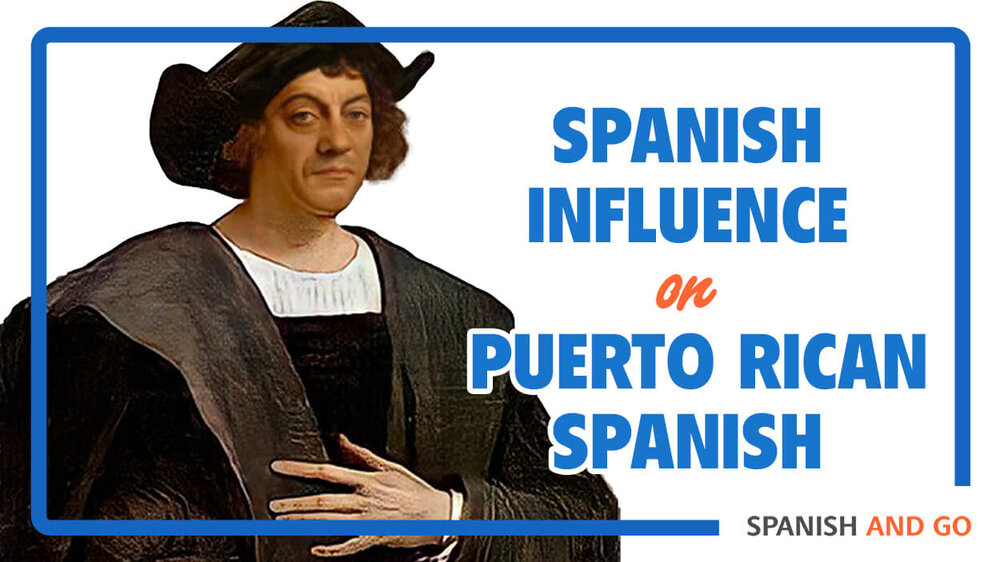
Spanish Influence
With the arrival of Christopher Colombus to Borinquen during his second trip to the continent, the island became a Spanish colony under the name of San Juan. It was during the 1520s that the name of the island and the name of the port – San Juan and Puerto Rico – were switched. From this moment on, Spanish started gaining ground until it became the main language among the islanders.
Some specialists claim that the Caribbean dialect demonstrates that most colonists came from Andalusia and the Canary Islands, as people from these places turn the L into a simple R (último – úrtimo) which is the exact opposite of what Caribbeans do. However, few cases have been detected where people from Puerto Rico and the Dominican Republic switch L for R.
On the other hand, there is another group of linguists that explains this R-L change with a different influence: the arrival of African slaves.
African Influence
In the 16th Century, due to the decline of Taino slaves, Africans were brought to the island to compensate for the decrease in labor force. Moreover, after the Haitian Revolution (and the resulting dismantling of all sugar cane plantations in the former French colony) Puerto Rico, together with Cuba and the Dominican Republic, became the most important region for the sugar cane industry, with an even higher demand for slave labor.
These African people brought with them new words that were incorporated not only into Puerto Rican Spanish but also into most other dialects as well, such as
- guarapo – sugar-cane juice or liquor
- bongo – bongo drum
- quimbombo- acrid fruit and its tree
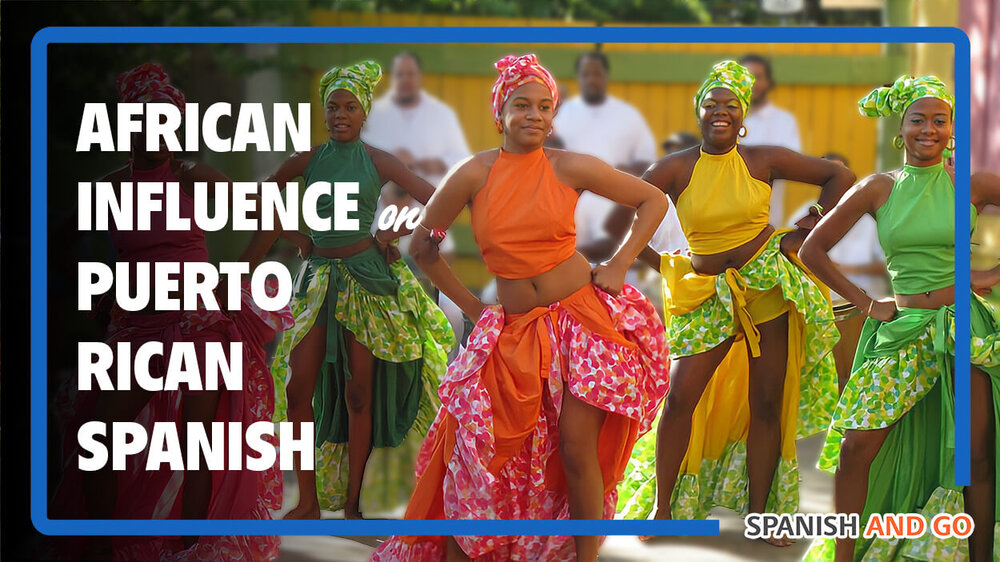
As previously mentioned , some scholars affirm that certain African pronunciation habits were also adopted by Boricuas, but this statement is still up for discussion.
English Influence
In 1898, as a result of the Spanish-American War, Spain lost its lasts colonies (Puerto Rico, Cuba, and the Philippines). Puerto Rico was ceded to the United States and, since then, there has been a fluctuating interest in spreading the use of English among the inhabitants of the Estrella del Caribe.
This triggered the development of what is probably the most controversial feature of some Spanish dialects: the presence of English, which can be expressed in various forms. Let’s have a look at some of them.
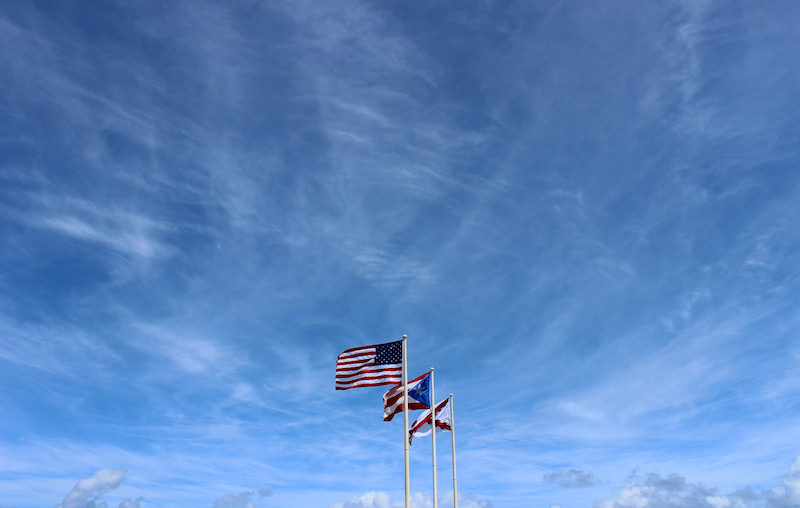
Placing the Subject Pronoun Before the Verb
Normally the subject pronoun is not mentioned in Spanish as it is implied by the verb. However, sometimes we might use it as it allows us to make emphasis or contrast. When doing so, the subject pronoun is placed either at the beginning or at the end of the sentence. For example,
- ¿Tú de qué hablas? / ¿De qué hablas tú?
- ¿Tú qué quieres? / ¿Qué quieres tú?
- Ya tú sabes. / Ya sabes tú.
In Puerto Rico, on the other hand, the subject pronoun is placed right before the verb, like in English.
- ¿Cómo tú estás?
- ¿De qué tú hablas?
- ¿Qué tú quieres?
Spanglish: Using English Words and Phrases
Certain English words and phrases are used instead of its equivalent in Spanish.
- La party estaba full y la gente era súper cool.
- Take it easy, todo va a estar bien.
- Vámonos de shopping.
Hispanizing English Words
Sometimes, in the process of adopting English words, Puerto Ricans transform these to resemble or to be used as Spanish words.
- Puerto Rican Spanish: Parquié el carro frente al mall.
- English: I parked the car in front of the mall.
- Generic Spanish: Estacioné el carro frente al centro comercial.
“…young people use Spanglish differently from their elders, just as immigrants use a type of Spanglish that is unlike the Spanglish spoken by second-generation Latinos.”
— Ilan Stavans, New York Times
This interplay between English and Spanish, commonly known as Spanglish or code-switching, is not exclusive to Puerto Rico. There are other variants, such as Tex-Mex (in the south of the United States and north of Mexico), Dominicanish (in the Dominican Republic), Nuyorican (spoken by Puerto Ricans living in New York), and Cubonics (used by Cubans who live in Florida), among others.
Furthermore, “…within those nationally defined groups, young people use Spanglish differently from their elders, just as immigrants use a type of Spanglish that is unlike the Spanglish spoken by second-generation Latinos.” –Ilan Stavans, New York Times
In 1977, the first literary work written in Spanglish was published: Pollito Chicken by Puerto Rican writer Ana Lydia Vega. There is even a Spanglish dictionary which was created some years ago, in 2003, by Mexican linguist Ilan Stavans. It’s called Spanglish: The making of a New American Language, and it gathers 6,000 words that emerged from the fusion between Spanish and English. He says that the potential of Spanglish is such that, if its grammar and syntax achieve standardization, it will be considered a language in of itself.
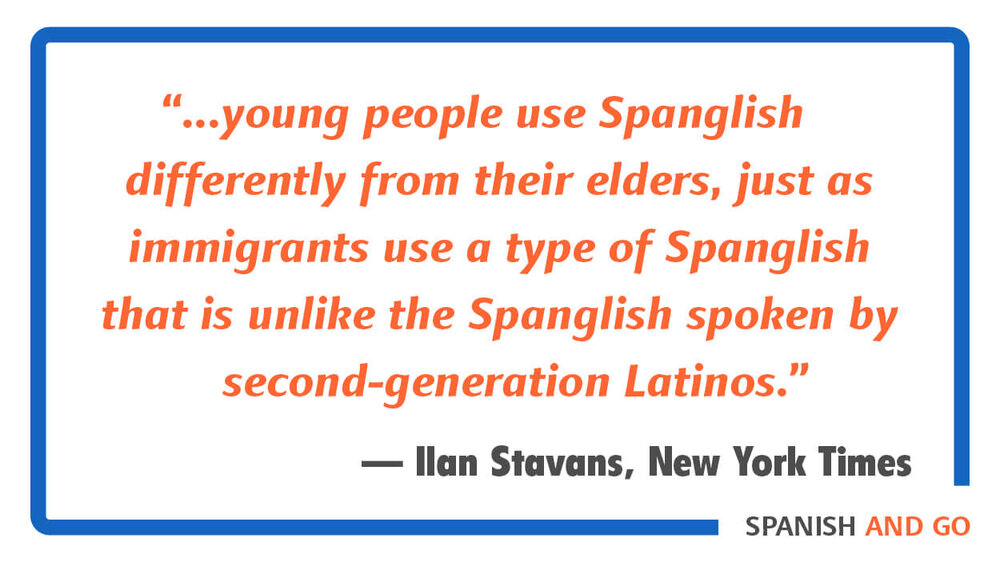
Resources for Learning Puerto Rican Spanish and Slang
Want help understanding Puerto Rican Spanish? We have a few resources that can help you.
First, you can check out our blog post where we explain dozens of different Puerto Rican slang words and terms.
Next up is Gritty Spanish, an audio-based program designed to increase your listening comprehension. Unlike other audio methods, you’ll hear a lot of slang and dramatic conversations. While some of the voice acting sounds a bit sensational or grotesque, it’s full of vocabulary you’re bound to hear in the streets.
Another great resource is a book called Speaking Boriqua (A Practical Guide to Puerto Rican Spanish). While you won’t get to hear audio examples of how the different words sound with this book, you will learn a lot of vocabulary and phrases that are extremely common here on the island.
And don’t forget that no course can totally replace finding an actual person you can talk to in Spanish. That’s why we specifically pick italki as a great resource to practice your carribean Spanish skills. Puerto Rican teachers are hard to come by on the platform, so you can also search for Dominican and Venezuelan teachers who have a similar accent. Sign up here.
Final Thoughts
These characteristics of the Puerto Rican dialect do not impede the effective communication with Spanish speakers from other places. There’s no doubt that there are still many things for us to learn about this dialect and the Spanish language in general but, after this quick look, it’s clear that this flavor of Spanish is undoubtedly a reflection of the cultural richness found in Puerto Rico.
Frequently Asked Questions
Q: How is Puerto Rican Spanish different from other Spanish dialects?
A: Puerto Rican Spanish is a unique dialect spoken in Puerto Rico, influenced by Taíno, Spanish settlers, and African languages. It has distinctive pronunciation, vocabulary, and grammar features not found in other dialects. Some differences include unique pronunciation of the letter “r,” “d,” and “s,” and some distinct word endings and vocabulary.
Q: What is Puerto Rico’s official language?
A: The official languages of Puerto Rico are Spanish and English. Spanish is the most widely spoken language on the island, while a significant portion of the population is bilingual in Spanish and English.
Q: Do all Puerto Ricans speak Spanish?
A: Yes, the majority of Puerto Ricans speak Spanish as their first language. However, many Puerto Ricans also speak English fluently due to the island’s history with the U.S. and the influence of American culture.
Q: Is Puerto Rican Spanish similar to Mexican Spanish?
A: While both Puerto Rican and Mexican Spanish are varieties of the Spanish language, there are noticeable differences between them, such as pronunciation, accent, vocabulary, and expressions. These differences are mainly due to the geographical location, history, and cultural influences of each region.
Q: What is the origin of the Puerto Rican accent?
A: The Puerto Rican accent is a product of various linguistic and cultural influences from Taíno, Spanish settlers from Andalusia and the Canary Islands, and African languages. French pronunciation has even influenced much of the west coast of the island from immigrants who settled in that area generations ago. Over time, these diverse influences blended to create a distinct and unique Puerto Rican Spanish accent.
Q: What is the term “Boricua” and how is it used?
A: “Boricua” is a term of endearment and pride used by Puerto Ricans to refer to themselves, their culture, and their island. It is derived from the Taíno name for Puerto Rico, “Borikén” or “Borinquen.” The term helps to express a sense of identity and connection to Puerto Rican heritage, and is widely used by Puerto Ricans both on the island and in the diaspora.
Q: Can Puerto Ricans speak English?
A: Yes, a significant number of Puerto Ricans can speak English fluently, as it is one of the island’s official languages. Exposure to U.S. culture and the bilingual education system in Puerto Rico contribute to this ability. However, the extent of English proficiency may vary depending on an individual’s education, location, age, and personal experiences.
Q: How does Caribbean Spanish influence Puerto Rican Spanish?
A: Puerto Rican Spanish is a variety of Caribbean Spanish, sharing similarities with other dialects such as Cuban and Dominican Spanish. Caribbean Spanish is unique for its pronunciation, consonant dropping and blending, and specific vocabulary influenced by indigenous and African languages. This regional proximity and cultural exchange contribute to the characteristics of Puerto Rican Spanish.
Q: What are some common Puerto Rican Spanish words and expressions you may not hear in other dialects?
A: There are numerous words and expressions specific to Puerto Rican Spanish, including terms like “jíbaro” (a rural Puerto Rican), “chinchorro” (a food stand or small restaurant), “cangri” (a cool or powerful person), and “chavos” (money). These unique words and phrases are part of the island’s linguistic and cultural heritage and help set Puerto Rican Spanish apart from other dialects.
Q: Is the Spanish spoken in Latin America and Puerto Rico different?
A: Yes, the Spanish spoken in Puerto Rico is different from that spoken in Latin America due to varying historical, cultural, and geographical factors. Each country and region in Latin America has its unique Spanish dialect with distinct vocabulary, pronunciation, and grammar features. While there may be similarities across the dialects, there are also noticeable differences that make the Spanish spoken in each region unique.
Images via pxhere (mouth), Wikimedia (flags).

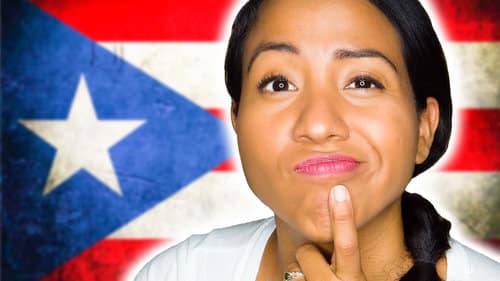
Related Posts
Don’t Say “Me Gustaría” [10 Better Alternatives in Spanish]
How to Order Coffee and Other Drinks in Spanish
The Lingoda Sprint: An Honest Review